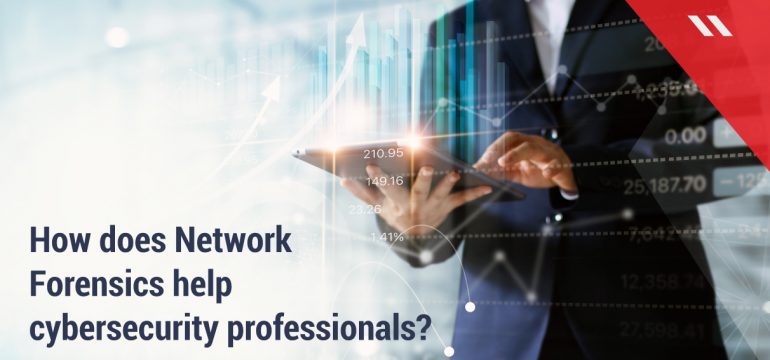Network forensics refers to a branch of digital forensics, chiefly involved with the collection and analysis of network traffic for the purpose of understanding evidence about cybercrimes for preventing it. A report from the European Union Agency for Cybersecurity (ENISA) notes that the importance of network forensics has become more pronounced in recent years with the emergence and popularity of network-based services like e-mails, e-commerce and others.
According to ENISA, network forensics is based upon the OSCAR methodology which can be expounded into the below:
Obtain information
Collection of general information about a particular incident, the operating environment, date and time, people involved, etc.
Strategize
Planning of the investigation into the incident, starting with the creation of a priority list.
Collect evidence
In reference to the plan that has been created in the previous phase, the evidence must be collected about the incident with proper documentation, actual capture of the evidence itself and proper storage or transportation of the collected evidence.
Analyze
Analysis of collected evidence by trained investigators using different methodologies and techniques.
Report
Reporting the results of investigations to the required stakeholders. The report into the investigation must be factual and easily understandable.
The field of network forensics requires the collection of network traffic data for analysis and investigation. Network traffic data is collected based on two methodologies:
Catch it as you can method
In the catch-it-as-you-can method, all packets are routed through a traffic point and stored in a database. The analysis is performed on the stored data and this analysis may also be stored on the system. This method requires a high storage capacity.
Stop, look and listen method
In this method, only the data that is required to be analyzed is saved to the database. Traffic is filtered and analyzed in real-time which requires fast processors, but low storage capacities.
With proper implementation, network forensics can be a valuable tool for organizations to acquire vital findings of their network traffic. From an information security perspective, network forensics enable cybersecurity professionals to understand their threat environment more clearly.
Investigating security incidents to improve response
Enterprises are focusing on threat response in the current environment where there are multiple attack vectors of various kinds. Network forensics allows higher-quality investigations of security incidents where it is possible to understand and identify the lapses in the perimeter. This leads to a better incidence response overall.
Identifying anomalies
Through proper analysis and processing of network data, it is possible to identify anomalies which defy baseline patterns. These anomalies are often the first step towards the detection of a security threat within the enterprise.
The efficiency of security solutions
While all enterprises use different types of cybersecurity solutions for protection against threats, they may find it difficult to evaluate the efficiency of these solutions. Through network forensics, it is possible to get actual data into threats detected and blocked along with other useful information, allowing for a better understanding of the efficacy of the solution being used.
Threat intelligence
Network forensics play an important role in delivering threat intelligence for an enterprise. Analysis of the forensic data can help to throw up important information about threats on the basis of which enterprises can plan their defence.
Similar to how forensics play an important role in investigations into physical crimes, network forensics can also help investigators uncover important information about cybercrimes. That is why this methodology is being increasingly used in the fight against cyber threats.




